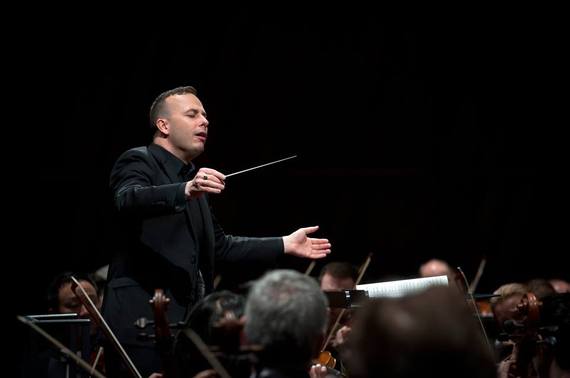To finish out 2016 before traditional seasonal concerts commence, Philadelphia Orchestra musical director Yannick Nézet-Séguin programmed a weekend of raucous Russian masterpieces by those rebels with a musical cause- Sergei Prokofiev and Dmitri Shostakovich. This on the heels of a series of vibrant performances over the fall of French masterpieces by Saint-Saens, Ravel and Berlioz, the maestro warming up the Philadelphians for his three week mid-season French repertory festival.
But this was a night for Russian icono-classics starting with Prokofiev's Piano Concerto no 2 composed at the beginning of the composer's international success as a concert pianist. The concerto reveals so much about Prokofiev's adventurous musical spirit, not to mention his display his concrete structural innovations.
Pianist Yefim Bronfman has played this work with distinction with many orchestras and his interpretive artistry is all about Prokofiev's sensibility that includes the work's squirrelly precision in piano solos that build like a time-lapse musical tree that can go anywhere. There were moments in the first movement when he seems in his own zone scrambling piano-orchestral tempos. Bronfman's anvil fingers moving over the keyboard at mach speed.
There is more piano-concerto clarity when Prokofiev's heavy atmospherics give way to airier orchestral architecture- in the second movement's spidery piano riffs, are child's play for Bronfman, even played with a hint of salon vamping. Precision edges return as the orchestra thunders in waves of symphonic density, momentarily burying the piano, then the orchestral halts, leaving the soloist mystically floating on. For many who just know Prokofiev's most frequently war-horse ballet-concert repertoire, this reveals another musical realm of the composer.
As demanding as the concerto is, it was just a warmup for Shostakovich's Symphony No. 4, which is indeed, in its scope, a glittering world of musical truth and invention, Shostakovich at his most narrative and uncensored. He was forced to censored himself, pulling the piece from its premiere in 1936, after the disastrous reception of his "Lady Macbeth" after Stalin walked out of the performance and it was covered by Pravda, the official Soviet paper as "Muddle Instead of Music" in Pravda, the official Soviet paper. The composer not wanting to loose his income or risk worse His knew his 4th symphony would be heard with jaundiced ears as too musically liberated. The symphony wasn't premiered in Russia until 1961, long after Stalin's death. Eugene Ormandy conducted its US premiere with the Philadelphians in 1963.
Indeed, Shostakovich's 4th just engulfs your senses and even though there are several concussive sections, its power has nothing to do with the volume. It is a fireworks display of Russian musical narratives that Shostakovich displayed in such film scores like his 1929 score to New Babylon exemplar of the composer's roiling cultural motifs. In the 4th symphony's editorializes with its blazing marches, drifting waltz-time, passionate abstractions and other ironic mise-en-scenes that would politically scandalize Stalin's regime. Yes, then as now, art is freedom's voice and weapon.
Meanwhile, Nézet-Séguin turns this orchestra way up, but never at the expense of crystallized instrumentation, Shostakovich's under-streams do not disappear into the strings.
The fast tempos of the string passages are masterfully led by concertmaster-violinist David Kim and associate principal Juliette Kang in tandem the breadth of the lower strings coming forth in vivid counterpoint. This symphony also a chance to show off the orchestra's technical artistry among the woodwinds and brass, repeatedly delivering in this performance, Shostakovich's musical, and often volcanic polemics.
This season Nézet-Séguin is programming large, modernist works, that really rattles the artistic rafters and show how muscled this orchestra out of the safe symphonic concert zones.

